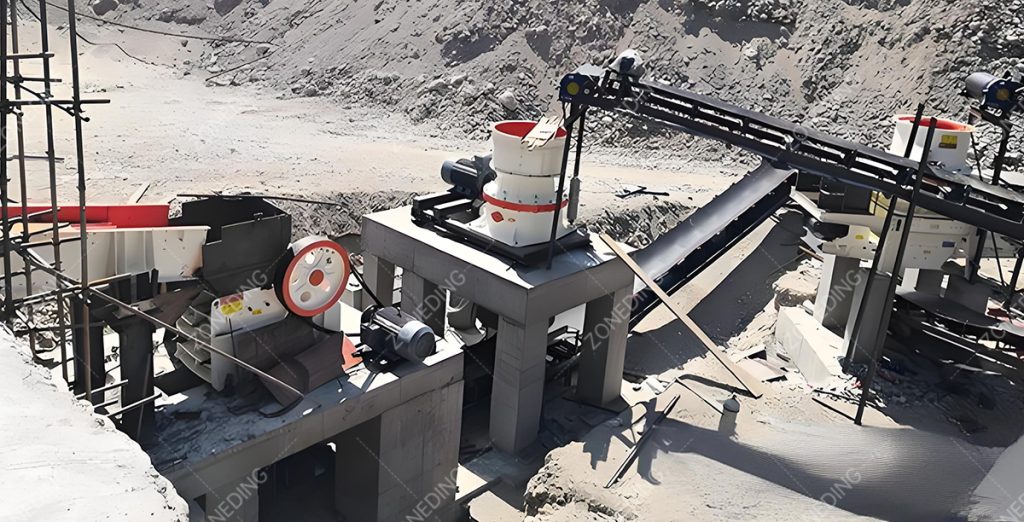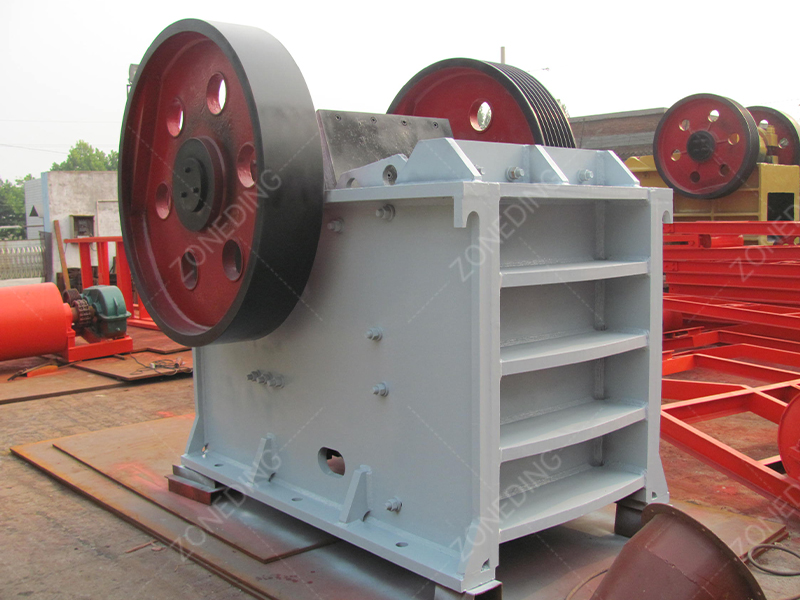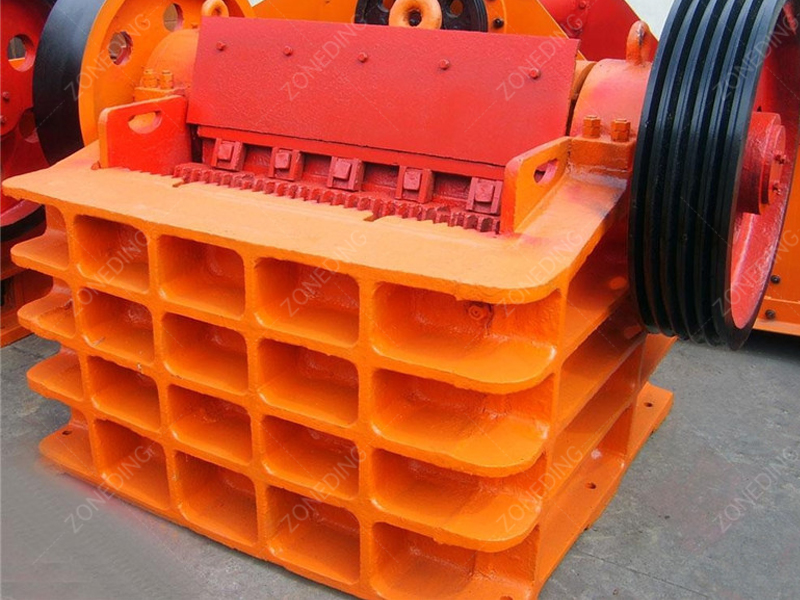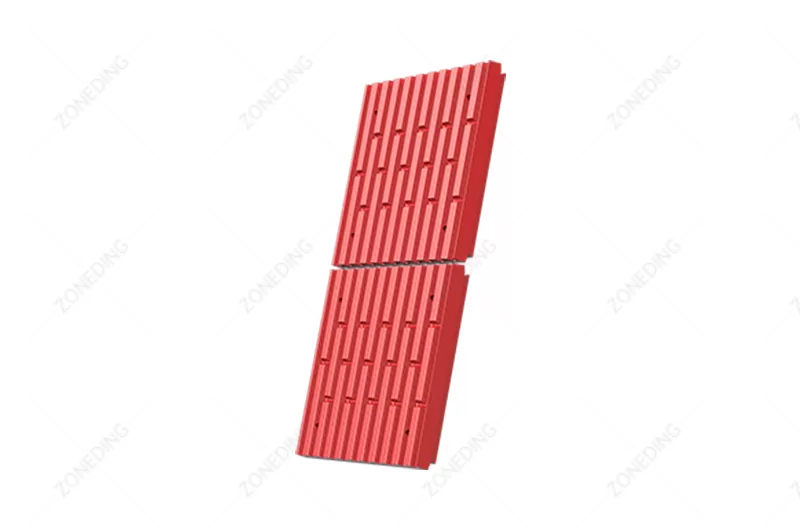Selecting Efficient Gold Tailings Dewatering Equipment
3607Discover the main types of antimony ore, like stibnite, and learn the key ore dressing methods used for extraction, including flotation and gravity separation.
View detailsSearch the whole station Crushing Equipment
Low throughput and high wear rates in jaw crushers lead to increased cost-per-ton. Unscheduled downtime for maintenance further reduces profitability. This is a common operational issue.
To increase throughput and reduce wear, operators must use a controlled feed system, set the Closed Side Setting (CSS) correctly, use the appropriate jaw plate material, and prevent chamber clogging. These actions improve mechanical efficiency and lower costs.

I have analyzed jaw crusher operations for decades. Most inefficiencies are not from machine defects, but from incorrect setup and operating procedures. This guide provides a direct, technical explanation of how to optimize a Jaw Crusher for lower costs and higher productivity, based on mechanical principles.
Many operations feed material inconsistently, with large dumps followed by empty periods. This method of operation is inefficient and causes high stress on the crusher components.
Correct feeding is not direct dumping. High output is achieved with a steady, controlled feed rate from a Vibrating Feeder. This prevents overload conditions, reduces component wear, and allows the crusher to operate at its designed capacity.
A jaw crusher’s design assumes a consistent material feed. Direct dumping from a truck or excavator creates a surge load that can exceed the crusher’s capacity, leading to a condition called choke feeding. This places high stress on the eccentric shaft, bearings, and frame. The following period, when the crusher runs empty, is unproductive time. A Vibrating Feeder is a machine that regulates the flow of material. It accepts large dumps and provides a continuous, even stream of rock into the crushing chamber. This allows the crusher to maintain a stable power draw and a consistent high rate of production. This is the foundation of an efficient Primary Crushing circuit.



| Feeding Method | Mechanical Result | Operational Consequence |
|---|---|---|
| Direct Dumping | Surge and Starve Cycle | Low average output, high component stress, increased risk of stoppage |
| Vibrating Feeder | Steady, Controlled Flow | High and stable output, reduced wear rates, predictable operation |
The Closed Side Setting (CSS) is a critical machine adjustment. An incorrect CSS will result in either an unacceptable product size or an inefficient operation with high wear.
The CSS is the minimum gap between the jaw plates. It determines the maximum product size. A smaller CSS produces a finer product but lowers throughput, increases Jaw Plate wear, and raises power consumption.
The CSS is the primary control for the product size of a Jaw Crusher. The objective is to set the CSS to produce the correct feed for the next stage of crushing, which is often a Cone Crusher. Setting the CSS smaller than necessary has negative consequences. First, throughput in tons per hour decreases because material requires more crushing cycles to exit the chamber. Second, wear is concentrated on the lower portion of the jaw plates, leading to a shorter service life. Third, the motor must draw more power to crush the material to a smaller size. The optimal strategy is to use the largest CSS that produces a feed size acceptable to the secondary crusher. This maximizes the Jaw Crusher Efficiency and minimizes the Cost per ton crushing.
Rapid wear of jaw plates is a significant operational cost. The cause can be the material being crushed, but it is often related to operational parameters or incorrect part selection.
Jaw plates wear quickly due to abrasive rock, improper installation, or an incorrect feed profile. Reversing worn plates is not recommended, as it alters the chamber geometry, reduces performance, and can cause damage to the machine.
High Crusher Wear directly impacts profitability. For highly abrasive materials like granite or river stone, jaw plates made from a higher grade of manganese steel (e.g., Mn18, Mn22) are required to achieve a reasonable service life. Another factor is the crushing chamber geometry. As plates wear, the nip angle changes, which can cause material to slip instead of being fractured. This abrasive slipping accelerates wear. Some operators reverse worn plates to extend their use. This practice is inefficient. A reversed plate creates an incorrect chamber profile, which reduces the machine’s ability to grip new feed material, lowers throughput, and applies uneven forces to the crusher frame and toggle plate. Replacing worn plates with new ones is the more cost-effective solution when considering overall plant production.


| Issue | Probable Cause | Corrective Action |
|---|---|---|
| High rate of even wear | Abrasive feed material | Use jaw plates with higher manganese content (Mn18, Mn22) |
| Material slipping in chamber | Worn plates, incorrect nip angle | Replace jaw plates, verify feed size is appropriate for the gape |
| Concentrated wear at bottom | CSS setting is too small | Widen the CSS to the largest acceptable dimension |
Sudden crusher stoppages from a clogged chamber or motor overload are usually preventable events caused by incorrect feed material. This results in significant downtime for manual cleaning.
Clogging results from two main causes: feeding material with excessive fines and clay, or failing to remove uncrushable tramp metal. Fines can compact into a solid mass, while tramp metal will physically jam the crusher.
A Jaw Crusher is engineered to fracture hard, brittle materials. It is not designed to process plastic materials like clay or uncrushable objects like steel.
The rotational speed of the flywheel affects both power consumption and crushing force. It is a parameter that is engineered for a specific balance and should not be altered without careful consideration.
The flywheel stores kinetic energy, which is used to crush rock. Its speed is specified by the manufacturer for an optimal balance of power and energy use. Increasing the speed to raise output results in higher energy costs and potential mechanical damage.
The function of the flywheel is to store energy during the non-compressive part of the eccentric shaft’s rotation and release it during the high-load crushing stroke. This system allows a smaller electric motor to power the machine by evening out the power demand. The manufacturer selects the flywheel mass and RPM to achieve the best balance between crushing force and energy consumption. An operator might try to increase crusher speed by changing the pulley size to Increase Crusher Throughput. This is not recommended. While it may slightly increase the tons per hour, it will also significantly increase power consumption per ton. The higher operating speed also increases vibration, which can accelerate the wear of bearings and other components. The factory setting represents the correct operational balance.
While wear part replacement is a planned event, major component failures are not. These failures are typically caused by a lack of basic preventive maintenance.
The most critical maintenance tasks are checking bolt torque and inspecting the foundation. Vibration from operation will loosen fasteners. A degraded foundation will transmit excessive vibration back into the crusher frame, leading to fatigue failure.
The mechanical integrity of the crusher installation is critical for its long-term reliability.
Applying these general principles requires specific data about your material and production targets. A generic setup is not optimal. You need a configuration specific to your operation.
To receive a custom optimization plan, you need to provide a sample of your feed rock along with your production requirements. The manufacturer can then analyze this data to recommend specific settings and components for your application.
As a manufacturer of Stone Crusher Equipment, our role is to provide technical solutions. The process is based on data. The client provides the operational targets (tons per hour, desired product size) and information on the feed material (rock type, max feed size, presence of clay or moisture). Our engineers use this information to create a specific configuration plan. This plan includes the recommended jaw plate material and profile, the optimal CSS, and the necessary feeder settings to create an efficient and balanced Stone Crushing Plant. The goal is to provide a setup that minimizes the cost per ton produced.
Jaw crusher optimization is achieved by systematically applying mechanical principles. By controlling the feed, setting the CSS correctly, using the right wear parts, and performing regular maintenance, you can reduce costs and increase production.
Discover the main types of antimony ore, like stibnite, and learn the key ore dressing methods used for extraction, including flotation and gravity separation.
View detailsThis guide details the dolomite processing steps: from extraction and crushing to calcination. Learn the methods that unlock its value in various industries.
View detailsMaximize efficiency in mineral processing! Uncover performance of five key crusher types, optimized for throughput, energy, and cost-saving ore reduction.
View detailsExplore the complete process of converting spodumene ore into high-grade lithium concentrate. Covers all vital steps, from crushing to final beneficiation.
View detailsWe use cookies to ensure that we give you the best experience on our website. If you continue to use this site we will assume that you are happy with it.
Privacy Policy